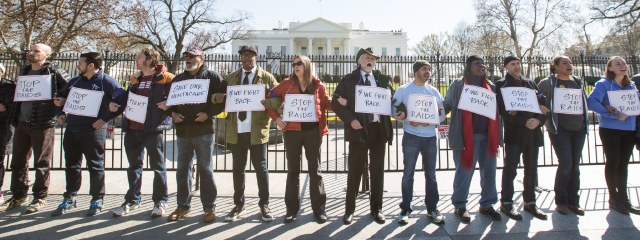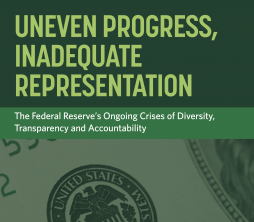Uneven Progress, Inadequate Representation: 2022 Analysis of Diversity in Federal Reserve Leadership
The Federal Reserve’s core policy committee—the Federal Open Market Committee (FOMC)—regularly meets to make decisions that have profound and long-lasting consequences for the country, the economy, and, in particular, for communities of color who have been historically excluded from the systems that create employment and build wealth. When the Fed decides how to implement its “dual mandate” and where the balance lies between the interests of price stability and maximum employment, the Fed is deciding who benefits and who gets left behind.
It is widely understood that in recent decades the Fed had clung to overly rigid formulations including, for example, a model of the Non-Inflation Accelerating Rate of Unemployment that was biased to emphasize price stability over maximum employment. As a result, the Fed implemented policies that slowed the economy while it still had the potential to absorb more workers. This choice unnecessarily relegated millions of people to unemployment and underemployment, kept the Black-white unemployment gap high, and stripped bargaining power from low-income workers while allowing wages to stagnate.
As of this writing, the Federal Reserve is responding to a world economy recovering from the pandemic. Recent patterns of price stability and employment remain in flux. Given the highly interpretive nature of the Fed’s decisions, it is more important than ever that its leadership truly represents the country to ensure that the FOMC makes decisions that are in the long-term interests of working families and not unduly influenced by those who already have the most economic and political power.













